The Second Congress of Victims of Communism took place in Madrid, organised by the Institute of Historical Studies (CEU) and the Centre for Studies, Training and Social Analysis (CEU-CEFAS). As could not be otherwise, the history of Soviet crimes occupied a large part of the conferences and one of these crimes, precisely because it is so little known, is the subject of this article. I am referring to Soviet repression against the Kazakh people, which was the subject of the conference “Kazakhstan: epicentre of the Gulag in the Soviet Union”, given by two members of the Kazakh Embassy in Spain, the attaché Aldiar Mukitanov and the counsellor Raimbek Toktaubayev.
Despite denialism, or theories that blame the deaths of millions of Ukrainians from starvation on political mistakes and bad weather, the Holodomor is recognised as a genocide by more than 30 countries, but it was not the only place in the Soviet Union where the famine of 1932-1933 was used to subdue and decimate the population. In Kazakhstan, the Soviet authorities also used starvation as an instrument of Stalinist terror. Here, as in Ukraine, food confiscations were tightened, repression intensified and the famine was used to Sovietise Kazakhstan by persecuting and From the beginning, the demands for grain were impossible to meet. The confiscations of grain (over a million tons in 1930) and livestock provoked all sorts of protests, from riots to even guerrilla acts in the Mangyshlak region, but did not diminish the communists’ demands. In a letter of 31 January 1931, Stalin insisted to Goloshchokin on “unconditional compliance with the decreed quota of 8 million tons” and demanded that he “take all necessary measures" murdering the Kazakh elite. This crime is known as the “Goloshchokin genocide”.
Stalin’s collectivisation came to Kazakhstan in late 1929, but its implementation presented more problems than in other parts of the USSR. Due to its location in Central Asia and its more extreme climate, Kazakh nomadic tribes moved with their livestock according to the seasons. The northern part of the country was more fertile, while the south was desert-like. There were very few settlements of importance, such as Almaty (capital in Soviet times) by Lake Balkash, or Akmola (later Astana, now the capital), which had grown from a Russian outpost in Tsarist times. Stalin’s man in Kazakhstan was the secretary of the Kazakh regional committee, Filipp Isayevich Goloshchokin. A Bolshevik of the old guard, he had been a commissar of the Urals Soviet and the Cheka between 1917 and 1925, and one of the organisers of the assassination of Tsar Nicholas II and his family in Yekaterinburg in July 1918. Like many other Chekists, Goloshchokin fell victim to the Stalinist purges and was arrested in October 1939. He was shot on 28 October 1941, but was reinstated in 1961.
From the beginning, the demands for grain were impossible to meet. The confiscations of grain (over a million tons in 1930) and livestock provoked all sorts of protests, from riots to even guerrilla acts in the Mangyshlak region, but did not diminish the communists’ demands. In a letter of 31 January 1931, Stalin insisted to Goloshchokin on “unconditional compliance with the decreed quota of 8 million tons” and demanded that he “take all necessary measures”.
However, the “necessary measures” did not subdue the Kazakhs’ resistance to the confiscations and Stalin’s response was ruthless. As in the case of the Ukraine, Stalin not only blamed the Kazakhs for the failure of the quotas, he also blamed the local communists for sabotaging collectivisation and for colluding with the kulaks (landowning peasants who refused collectivisation and were made a class enemy by the state). In an encrypted telegram of 21 November 1932, Stalin points out that “it must be understood that, under such conditions, the Soviet of People’s Commissars and the regional Party can take no other path than that of repression, although, obviously, repression alone is not enough and in parallel we need a broad and systematic propaganda campaign”.
The Goloshchokin campaign, like the one in the Ukraine, began with a persecution of the kulaks and the forcible confiscation of all food. The result, predictably, was widespread famine. Similarly, the process of Sovietisation, which began in 1928 and led to the persecution of the Kazakh elite, continued. Numerous writers, poets, politicians, engineers, historians and scientists were executed or interned in camps. Their families suffered the same fate. Many of those who survived the first purge were tried again in 1937 and executed or exiled to other Soviet republics.
Kazakhstan did not have a Gareth Jones, a journalist who revealed to the world what was happening, but a 19-year-old Russian girl, Tatiana Nevadovskaya, daughter of an exiled teacher in the Kazakh village of Shymdaulet, witnessed the famine and left her testimony in her diary, “The terrible years of famine 1932-1933”. Tatiana herself handed the diary over to the Kazakh central archives fifty years later. Other documents tell of beatings of peasants for stealing food from collective farms, often resulting in death, and even depriving a family of rations and condemning them to starvation. There were also cases of cannibalism, a secret OGPU report of 31 March 1933 mentioned the arrest of a woman in February for having cooked the corpse of a 6 or 7 year old child.
The Soviets opened eleven special camps (Gulags) in Kazakhstan. One of them, now a museum, was called ALZHIR, “the camp in Akmola for wives of traitors to the Fatherland”. More than 10,000 of these wives died in the camp. The deserted southern part of the country was used to resettle Kazakh kulaks and deportees from other regions of the USSR. In the 1930s, 64,000 Ukrainian Kulak families were resettled in Kazakhstan, followed by Chechens, Ingush, Germans, Koreans, Turks, Iranians, Crimean Tatars and Poles. However, as Toktaubayev pointed out during the conference, “the data still show large discrepancies in the number of labour camps set up by the communists”, so that even today “systematic and thorough research” is still needed.
According to demographer Sergei Maksudov, 1,450,000 Kazakhs died, 34% of Kazakhs at the time, to which should be added another 100,000 victims of other nationalities. In addition, another 700,000 Kazakhs fled Kazakhstan, mostly to China. As a result, Kazakhs became an ethnic minority in their own country until the 1980s.
Kazakhstan celebrates the Day of Remembrance of the Victims of Political Repression and Famine every 31 May. On this day, the dead are honoured with various events and wreaths. However, as was the case during Yanukovych’s rule in Ukraine, there is no talk of genocide. After the collapse of the USSR, Nursultan Nazarbayev became president of the country. Nazarbayev held power for 29 years, winning every presidential election by a landslide, until he left voluntarily in 2019 and was replaced by Kassym Khomar Tokayev. Like other former Soviet republics, Kazakh politics has been closely linked to Russia, yet in 2018 the Kazakh authorities banned the use of Russian at government meetings and in 2024, the Russian television channel Tsargrad was banned from broadcasting, accusing it of inciting ethnic hatred. These measures, dubbed ‘nationalist’ by Kremlin propagandists, have gone hand in hand with an increased interest in the country’s recent history. Of course, as in the Ukrainian case, the Russian government does not want to hear about genocides committed by Stalin, and defends the lack of political intentionality of the famine.
On 30 January 2019, journalist Zhambolat Mamai released, “Zulmat: Genocide in Kazakhstan”. The documentary, which was very well received, denounced the genocide by starvation against the Kazakh people, exile and bombings against the population for resisting confiscations (the pilots responsible for these bombings were decorated as “Heroes of the Soviet Union”). Mamai also denounced the existence of classified documents in the hands of the Kremlin confirming the commission of this crime. The Russian Foreign Ministry’s response, on 22 February, was an official statement “on the insinuations about the tragedy caused by the famine in the Soviet Union in 1932-1933”. The statement claimed that the tragedy was due to natural causes and that the emergency measures taken worsened the situation. “We are convinced that the manipulation of historical facts using the nationalist card will not succeed in deceiving the peoples of Central Asia, who have a bond of brotherhood with the Russians”.
In June 2020, several Kazakh MPs called for the famine to be recognised as a “genocide organised by the totalitarian power of the Bolsheviks”. In the words of MP Berik Dyusembinov, “until we recognise their deaths for what they really were, we will not have paid our debt to these tormented souls”. These tensions, between officially allied countries, have increased in the wake of Russia’s invasion of Ukraine and the Russian government’s increasingly undisguised nostalgia for the Soviet Union and Stalin’s rule. However, the Kazakh authorities do not seem to want to forget the past and, according to the attaché Mukitanov, a new film is being made about the extent of Soviet repression and the Gulag system. "Remembering these events is not to dwell on the pain, but to appreciate the peace, dignity and freedom we have today," Mukitanov concluded. The day may be closer when the crimes committed against the Kazakh people will no longer be such a little-known page of history.
Photo: Monument to the victims of the famine in Almaty.
Read also
Dante Augusto Palma: Milei is fighting the cultural battle by defending the “ideas of freedom”.
Dante Augusto Palma is a professor of Philosophy and Doctor of Political Science, and a researcher on issues related to political philosophy, philosophy of law and philosophy of communication.
Álvaro Peñas
José Antonio López Medina: "The story of the Aranjuez mutiny was a coup d'état. That is why it is so relevant today"
Interview with José Antonio López Medina, writer and historian.
Álvaro Peñas
“The demonstrations in Georgia are not going to slow down because we know what is at stake”: An interview with Nona Mamulashvili
The only way to defeat them is through elections, but when almost the entire state is in the hands of an oligarchy, you need enormous support to be able to reverse the situation.



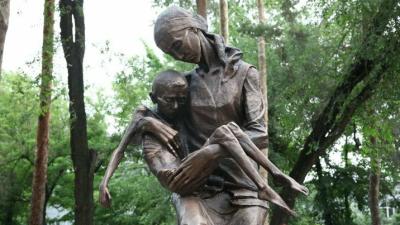

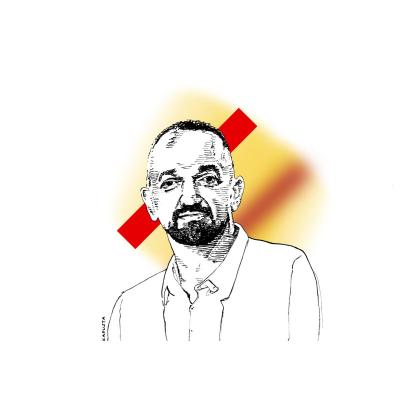
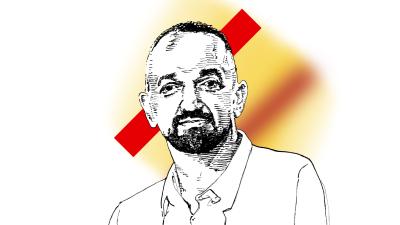


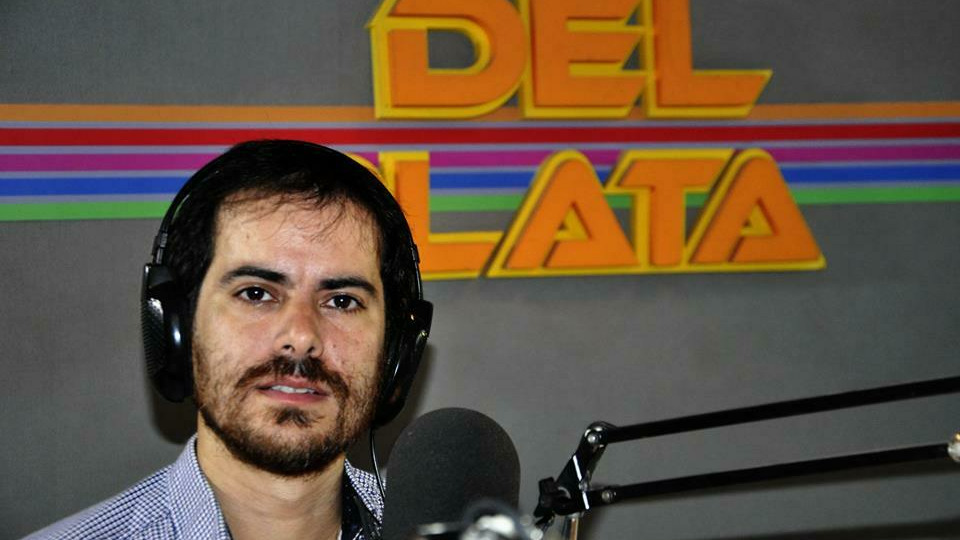
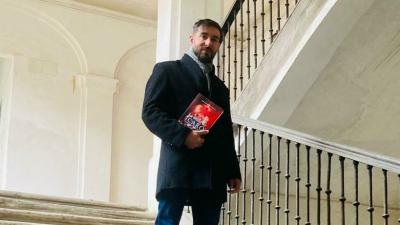

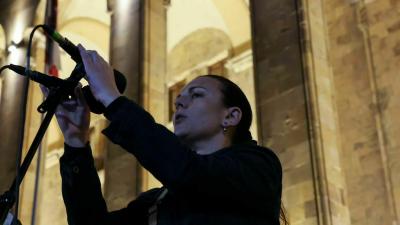

Comments (0)